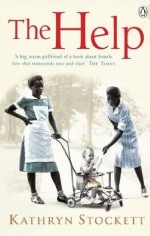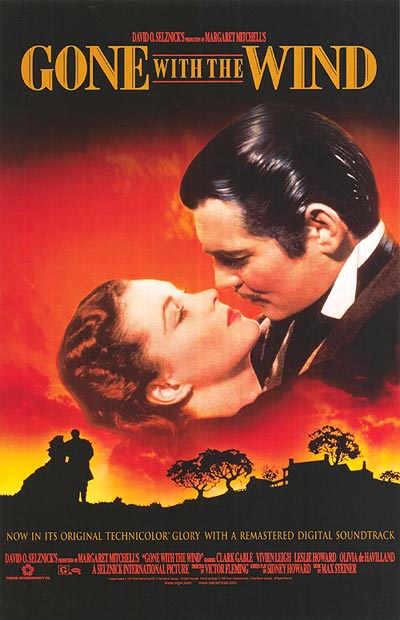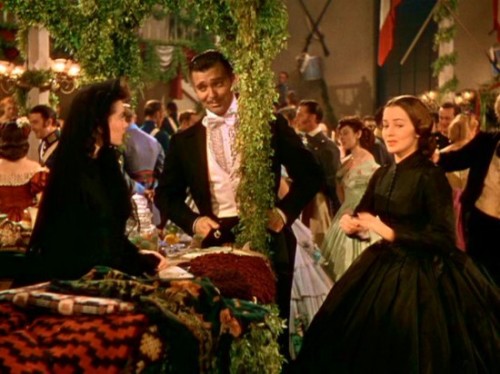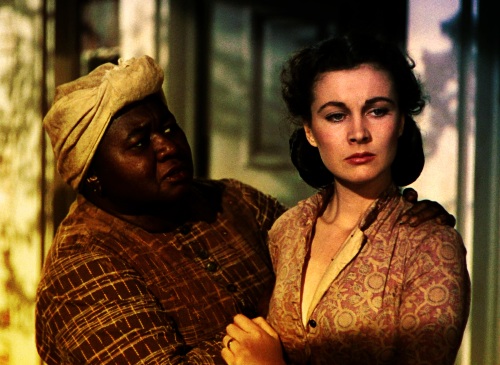Atlanta born Margaret Mitchell’s 1936 novel, Gone With The Wind, occupies an important place in American literature. After breaking publishing records with one million copies sold within six months, the novel was awarded the Pulitzer Prize, has been translated into over forty languages, and remains one of the best-selling novels of all time…
The Library of Congress’s July 2012 exhibition “Celebration of the Book” on “Books That Shaped America“, had an initial list of eighty-eight books by American authors that have influenced American lives. Gone with the Wind was included in the Library’s list. Librarian of Congress, James H. Billington said:
“The list is a starting point. It is not a register of the ‘best’ American books – although many of them fit that description. Rather, the list is intended to spark a national conversation on books written by Americans that have influenced our lives”
Among books on the list were Moby-Dick, The Adventures of Huckleberry Finn, The Great Gatsby, The Grapes of Wrath, The Catcher in the Rye, Invisible Man and To Kill a Mockingbird.
Margaret Mitchell wove many incidents of her life into the story, for example, the fire in May 1917 that ravaged 300 acres of Atlanta, Margaret and her mother helping the victims, just as the women do in the novel. She never wanted to seek out literary success and wrote this expansive work in secret, only sending it to publishers after she was mocked by a colleague who didn’t believe she was capable of writing a novel. She turned out to be more than capable however, and the book won the Pulitzer Prize and was adapted into one of the best known and loved films of all time. Mitchell would not get a chance to write another novel, as she was struck and killed by a car on her way to the cinema at only 49 years of age.
Even before the book’s publication, producer David O. Selznick had secured the film rights at Mitchell’s asking price of $50,000, more than any studio had paid for the rights to an author’s first novel. The film premiered in Atlanta at Loew’s Grand Theatre in December 1939, breaking all box office records in the course of its first run. It featured such popular actors as Clark Gable (Rhett Butler), Olivia de Havilland (Melanie Wilkes), and Leslie Howard (Ashley Wilkes), and made a star of unknown English actress Vivien Leigh (Scarlett O’Hara).
‘A Study of Scarlett’
Gone With The Wind remains one of Hollywood’s most popular and commercially successful films, and set new standards through its use of colour, set design, and cinematography. The film was nominated for thirteen Oscars and was awarded ten, including Best Picture, Best Screenplay, Best Actress, and Best Supporting Actress, which went to Hattie McDaniel (Mammy), the first African American to win an Academy Award.
It is a tale of unrequited love, a love triangle, challenging the morality of the nineteen-thirties while set in the previous century.
With its detailed atmosphere of a vanished age, its compelling characters, its forceful narrative, its description of human survival, and its portrayal of the persistence of romantic dreams, Gone With the Wind continues to enthrall readers worldwide. As well as being a novel of epic proportions, it is valuable as an historical record, though one that should probably be read with caution. A depiction of life and conflict in the nineteenth-century South, the novel also documents twentieth-century emotions about the old Confederate South.
The Title
Scarlett O’Hara uses the title phrase when she wonders to herself if her home Tara is still standing or if it has “Gone with the wind which had swept through Georgia.” In a general sense, the title is a metaphor for the departure of a way of life that existed in the South prior to the Civil War. Reportedly, the title was taken from a poem by Ernest Dowson: “I have forgot much, Cynara! gone with the wind” . Of course, the theme is familiar from the Bible book of Ecclesiastes: “Then I saw that all toil and all skill in work come from one person’s envy of another. This is also vanity and a chasing after wind” (Eccl 4:4 RSV).
The Story
For all the breadth and grandeur of the lost Confederate South, within the circle of the four main characters, Scarlett, Ashley, Melanie and Rhett, Scarlett is the central and most memorable character. Early in the story, ‘Miss’ Scarlett learns that one of her many beaux, Ashley Wilkes, is soon to be engaged to his cousin, Melanie Hamilton. She is stricken at heart. Scarlett confesses to Ashley she loves him and Ashley admits he cares for her. However, he knows he would not be happily married to Scarlett because he recognizes her immature understanding of love, and perhaps his own inability to match her. Throughout the story, she is obsessed by Ashley, who is always faithful to Melanie, who, far from despising Scarlett, sees beyond her apparent shallowness, and believes in the good in her. Scarlett considers her a sister throughout her life because Scarlett married Melanie’s brother Charles. Rhett, who eventually becomes her third husband, originally fell for her fiery temperament, never quite sees beyond the selfish, obsessive manipulator he judges her to be. Scarlett is unaware of the extent of Rhett’s love for her or that she might be compatible with him.
Margaret Mitchell arranged Gone with the Wind chronologically, basing it on the life and experiences of Scarlett O’Hara, as she grew from adolescence into adulthood. (During the time span of the novel, from 1861 to 1873, Scarlett ages from sixteen to twenty-eight years.) The growth and education of Scarlett O’Hara is influenced by the events of her time. Despite its length, at over one thousand pages, the novel is known for its “readability”.
Scarlett, the figure of a pampered southern belle, lives through an extreme reversal of fortune and wealth, and survives to rebuild Tara and her self-esteem. Scarlett’s ‘bad belle’ traits, her deceitfulness, shrewdness, manipulative and superficial outward behaviour, in contrast to Melanie’s ‘good belle’ traits, trust, self-sacrifice, and loyalty, enable Scarlett to survive in the post-war South, and pursue her main interest, making money.
Marriage was the goal of all southern belles, and all social and educational pursuits were directed towards it. Regardless of war and the loss of eligible men, young ladies were still subjected to the pressure to marry. By law and Southern social convention, household heads were adult, white propertied males, and white women and all African Americans were thought to require protection and guidance because they lacked the capacity for reason and self-control.
Not only is Scarlett’s love interest, Ashley Wilkes, lacking manliness, her husbands, the “calf-like” Charles Hamilton, and the “old-maid in britches”, Frank Kennedy, are unmanly as well. Mitchell is critiquing masculinity in southern society since Reconstruction. Charles, Frank and Ashley represent the post-war white South, with its power and influence emasculated.
“If Gone with the Wind has a theme it is that of survival. What makes some people come through catastrophes and others, apparently just as able, strong, and brave, go under? It happens in every upheaval. Some people survive; others don’t. What qualities are in those who fight their way through triumphantly that are lacking in those that go under? I only know that survivors used to call that quality ‘gumption.’ So I wrote about people who had gumption and people who didn’t”. (Margaret Mitchell, 1936)
Herschel Brickell, a critic for the New York Evening Post (1992), lauded Mitchell’s originality, “she tosses out the window all the thousands of technical tricks our novelists have been playing with for the past twenty years.”
The novel has been criticised, particularly in its treatment of slavery. Gone with the Wind is primarily concerned with the development of Scarlett’s character, all else, including racial oppression, is minimalized.
The novel reflects the ambivalence towards slavery expressed for example, by Abraham Lincoln “If I could save the Union without freeing any slave, I would do it; if I could save it by freeing all the slaves, I would do it; and if I could save it by freeing some and leaving others alone, I would also do that.”
Regarding the historical inaccuracies of the novel, historian Richard N. Current points out: “No doubt it is indeed unfortunate that Gone with the Wind perpetuates many myths about Reconstruction, particularly with respect to blacks. Margaret Mitchell did not originate them and a young novelist can scarcely be faulted for not knowing what the majority of mature, professional historians did not know until many years later”.
The Historian Jim Loewen has this opinion: ”I don’t think Margaret Mitchell uses the word “nigger” in Gone With the Wind”; certainly she doesn’t use it often. But “Gone With the Wind” is a profoundly racist novel. It laments the passing of the slave era as “gone with the wind.” In the novel, Mitchell (once) states openly that African Americans are “creatures of small intelligence.” And this book is by far the most popular book in the U.S. and has been for 60 years. The book is also profoundly wrong in its history. What it tells us about slavery, and especially Reconstruction, did not happen. So, while there may not be a political terminology problem with “Gone With the Wind”, it is profoundly racist and profoundly wrong. Should we teach it? Of course. Should we teach against it? Of course”.
“I was never one to patiently pick up broken fragments and glue them together again and tell myself that the mended whole was as good as new. What is broken is broken – and I’d rather remember it as it was at its best than mend it and see the broken places as long as I lived. ” Margaret Mitchell, 1936
The Help is a recent novel and film that portrays the racial imbalances of the 1960’s, illustrating how far America has  come, as well as how little progress has been made in the last 50 years. Author Kathryn Stockett puts it this way: “I don’t presume to think that I know what it really felt like to be a black woman in Mississippi, especially in the 1960’s. I don’t think it is something any white woman on the other end of a black woman’s paycheck could ever truly understand. But trying to understand is vital to our humanity. In The Help there is one line that I truly prize: “Wasn’t that the point of the book? For women to realize, we are just two people. Not that much separates us… not nearly as much as I’d thought.”
come, as well as how little progress has been made in the last 50 years. Author Kathryn Stockett puts it this way: “I don’t presume to think that I know what it really felt like to be a black woman in Mississippi, especially in the 1960’s. I don’t think it is something any white woman on the other end of a black woman’s paycheck could ever truly understand. But trying to understand is vital to our humanity. In The Help there is one line that I truly prize: “Wasn’t that the point of the book? For women to realize, we are just two people. Not that much separates us… not nearly as much as I’d thought.”
One enduring legacy of Gone with the Wind is that people worldwide often think it was the “true story” of the Old South and how it was changed by the American Civil War and Reconstruction. The film adaptation of the novel arguably amplified the effect.
Some readers of the novel have seen the film first and read the text of the novel through the film. Amongst many differences between the film and the novel is the staircase scene, in which Rhett carries Scarlett up the stairs. In the film, Scarlett weakly struggles and does not scream as Rhett starts up the stairs. In the novel, “he hurt her and she cried out, muffled, frightened.” Earlier in the novel, in an intended rape, Scarlett is attacked by a black man and saved by another black man, Big Sam. In the film, she is attacked by a white man. These seemingly minor differences must reflect a screen producer’s social sensitivity.
Throughout the world, the novel is read for its cross-cultural, universal themes: war, love, death, racial conflict, class, gender and generation, which speak especially to women. Another example is North Korea, where readers relate to the novel’s theme of survival, finding it to be “the most compelling message of the novel”.
Postscript
Intriguing is the story behind the discovery of the letters documenting the real-life romance that inspired Mitchell, how she gave the original manuscript of the short story Lost Laysen as a gift to her beau. Henry Love Angel, and how the manuscript, along with Mitchell’s intimate letters and treasured photographs, were lovingly safeguarded only to be discovered decades later in a shoebox! Lost Laysen gives a fascinating earlier insight into the character development that went into Gone With the Wind.
Reference: Jim Loewen [ushistory.org] Jim Loewen Debunking History 12/05/2000
Margaret Mitchell – Home Atlanta History Center dedicated site
With thanks


